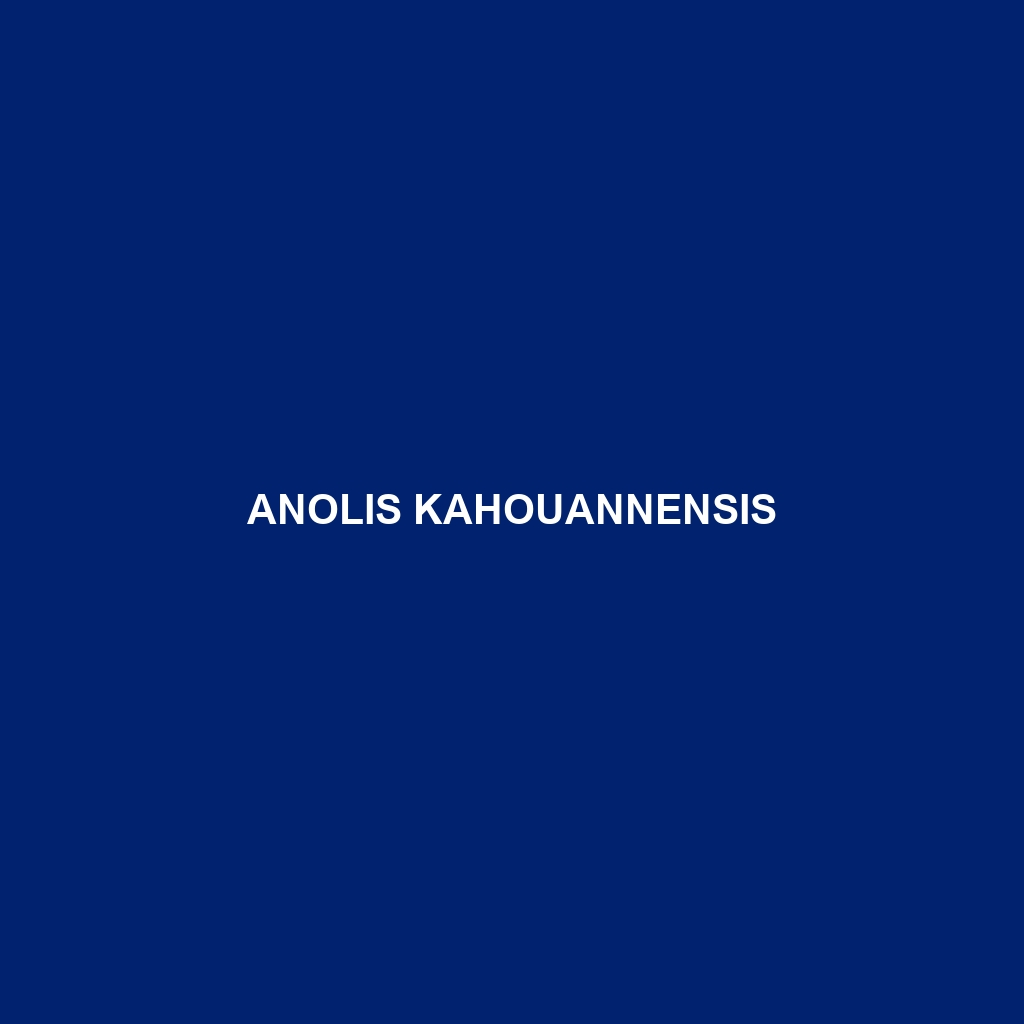Common Name: Anolis kahouannensis
Scientific Name: Anolis kahouannensis
Habitat:
Anolis kahouannensis is primarily found in the lush rainforests of the Caribbean, specifically on the islands of Dominica and Martinique. This species thrives in humid subtropical to tropical environments, often dwelling in the understory and canopy of the forest where abundant vegetation provides cover and hunting grounds. Their presence in rocky outcrops and near freshwater streams enhances their survival in these unique ecosystems.
Physical Characteristics:
Anolis kahouannensis is a medium-sized lizard, typically measuring around 12 to 15 centimeters in length. Its coloration ranges from vibrant greens to browns, allowing it to blend seamlessly into the foliage of its habitat. Notable features include a dewlap, which is often used in displays during mating rituals, and elongated limbs that facilitate agile movement among tree branches. The distinct patterns on their skin can vary considerably between individuals, contributing to their camouflage.
Behavior:
This species exhibits diurnal activity, meaning it is most active during the day. Anolis kahouannensis is known for its territorial displays, particularly during the mating season when males showcase their dewlaps and perform push-up movements to attract mates and assert dominance. They are adept climbers, displaying a fascinating ability to navigate both vertical and horizontal surfaces in their arboreal environment.
Diet:
Anolis kahouannensis is primarily insectivorous, feeding on a diet that includes various insects such as crickets, beetles, and small arthropods. These lizards also occasionally consume nectar and plant matter, demonstrating a more diverse feeding behavior than commonly observed in other Anolis species. Their foraging habits are crucial as they help control insect populations in their ecosystems.
Reproduction:
The breeding season for Anolis kahouannensis generally occurs during the warmer months, with females laying eggs in hidden locations within leaf litter or crevices. Clutches typically consist of 1 to 3 eggs, which incubate for several weeks before hatching. Juveniles are independent upon emergence and must quickly adapt to their environment to survive.
Conservation Status:
Anolis kahouannensis is currently classified as vulnerable due to habitat loss driven by deforestation and urbanization in its native range. Conservation efforts are essential to protect their natural habitats and ensure the survival of this unique lizard species.
Interesting Facts:
One of the fascinating aspects of Anolis kahouannensis is its remarkable adaptability to varying microhabitats within its ecosystem. Additionally, their ability to change color slightly aids in camouflage, making them elusive to predators and effective hunters alike. They are also known for their strong territorial behavior, which is vital in maintaining their populations.
Role in Ecosystem:
Anolis kahouannensis plays a crucial role in its ecosystem as both a predator and prey. By controlling insect populations, they contribute to the ecological balance and health of their environment. Furthermore, their interactions with other species, including birds and larger reptiles, highlight their importance in the food web of Caribbean rainforests.
